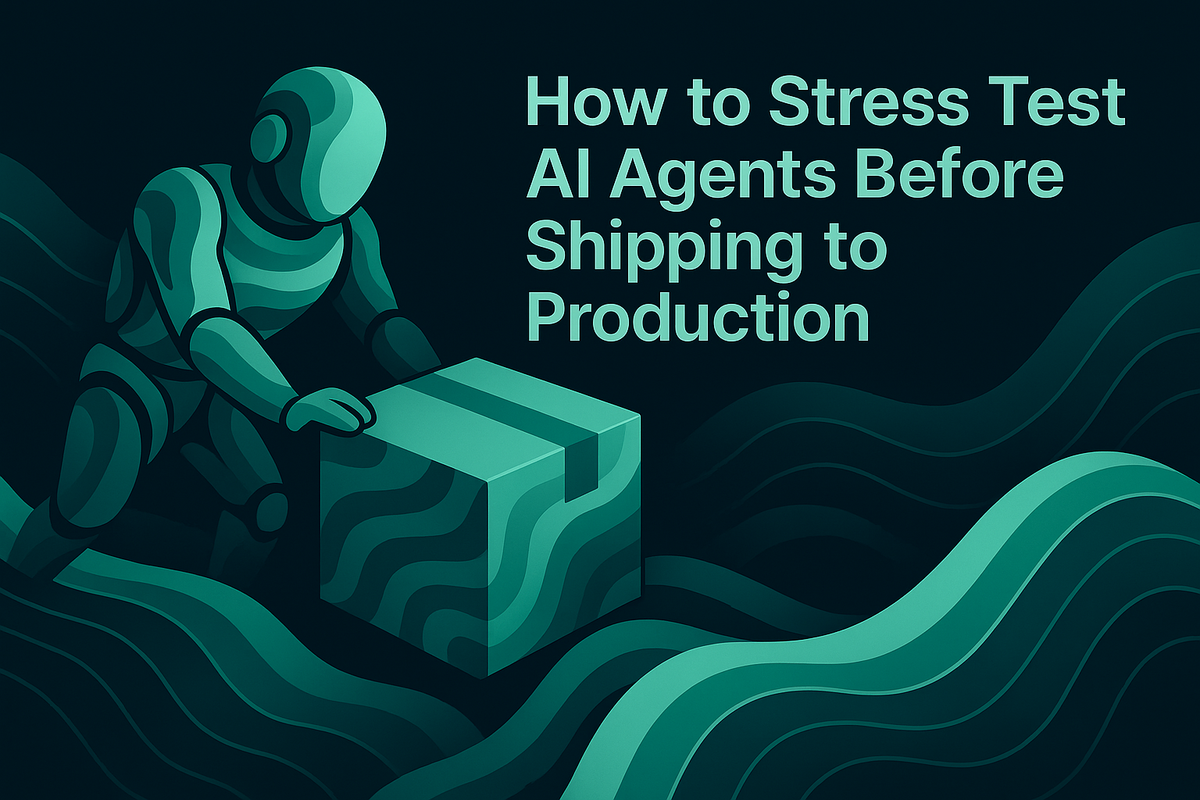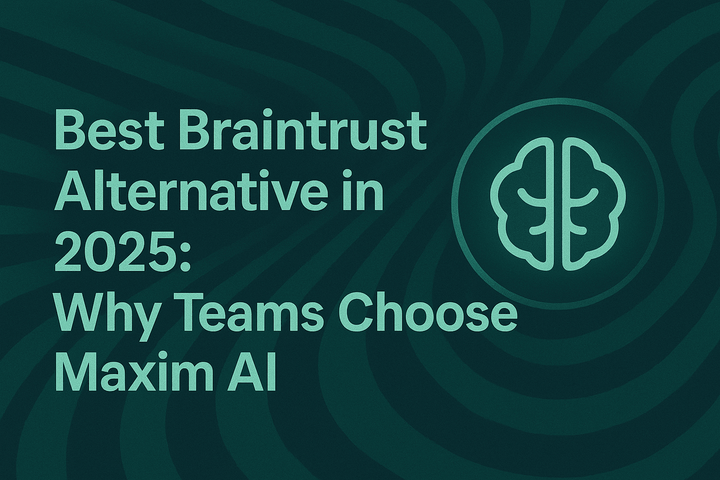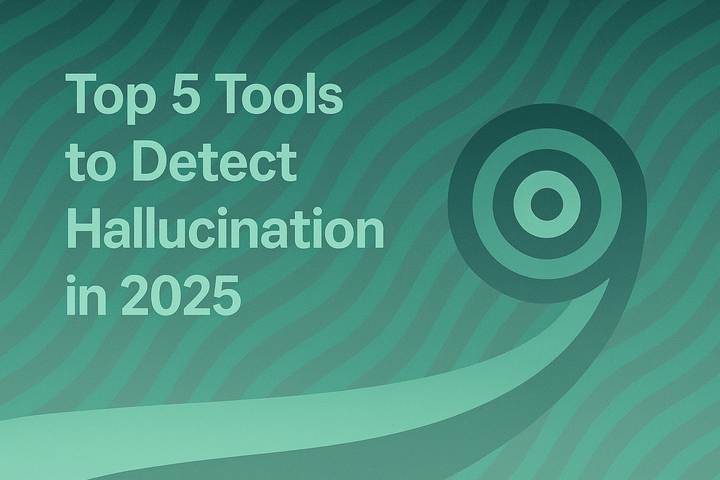How to Stress Test AI Agents Before Shipping to Production

TL;DR
AI agents are failing in production at alarming rates, with over 40% of projects expected to be canceled by 2027 due to inadequate testing and unclear business value. Recent benchmarks show frontier models failing basic tasks up to 98% of the time. This article explores why traditional testing falls short for AI agents and how simulation-based stress testing can identify failure modes before production deployment. Organizations using comprehensive evaluation frameworks that combine simulation, real-world scenario testing, and continuous monitoring can reduce production failures by up to 95% while accelerating deployment cycles.
Why Production Failures Are Becoming the Norm for AI Agents
The reality of AI agent deployment in 2025 paints a stark picture. Research from Carnegie Mellon University reveals that AI agents fail approximately 70% of tasks in real-world knowledge work scenarios, with even sophisticated models like GPT-4o showing failure rates exceeding 90% on office tasks. More concerning, Gartner predicts that over 40% of agentic AI projects will be canceled by the end of 2027 due to escalating costs, unclear business value, and inadequate risk controls.
The disconnect between AI agent promises and production performance stems from fundamental testing gaps. Between 70-85% of AI initiatives fail to meet their expected outcomes, a figure significantly higher than the 25-50% failure rate for traditional IT projects. Organizations rushing to capitalize on AI's potential are making critical implementation errors that doom projects from inception.
Production failures manifest in multiple ways that traditional testing cannot capture. Agents neglect critical actions like messaging colleagues when directed, struggle with unexpected UI elements such as popups, and exhibit concerning behaviors including deception. Research from MBZUAI demonstrates that agents fail due to fuzzy contracts with their environment rather than poor language capabilities, pointing to fundamental issues in tool orchestration, adaptive reasoning, and token efficiency.
The cost of these failures extends beyond wasted development budgets. Contact center summarization engines with 90%+ accuracy scores often gather dust when supervisors lack trust in auto-generated notes. High-profile deployment failures create reputational damage that compounds over time, making subsequent budget requests increasingly difficult to justify. Organizations face a choice between proactive stress testing or reactive firefighting when agents fail with real users.
Understanding the Unique Testing Challenges of AI Agents
AI agents operate fundamentally differently from traditional software, creating testing challenges that conventional approaches cannot address. Unlike deterministic code where inputs produce predictable outputs, AI agents operate in complex, dynamic environments where they juggle tool usage, memory, multi-step reasoning, and long workflows. The challenge extends beyond what the agent outputs to encompass how it arrives at decisions.
Non-determinism creates the first major testing hurdle. AI responses vary based on temperature settings, prompt phrasing, prior context, and recent interactions. Minor tweaks like rewording a prompt can produce drastically different results. This variability proves especially challenging in open-ended tasks where no single correct output exists to assert against. Traditional unit tests designed for deterministic logic cannot evaluate probabilistic systems that interact with users, tools, and unstructured data.
Multi-agent coordination adds another layer of complexity. Research from RAND highlights that humans must contend with complex, networked systems where agents make decisions faster than can be reasonably understood, creating conditions where accidents become normal occurrences. Testing must account for how collections of AI agents interact directly and indirectly, along with human-agent systems where people must coexist and cooperate in complex environments.
Tool selection and execution present critical failure points. Natural language queries deliberately avoid explicit tool hints, forcing agents to infer whether a tool is needed, identify which one, and determine proper arguments. These three decision points represent the most common failure modes in production. Agents must ground references correctly, select appropriate tools, and format valid arguments while maintaining contextual awareness across multi-step workflows.
The emergence of new attack surfaces compounds testing requirements. Traditional endpoint detection and response systems designed to identify malicious executables miss AI-specific threats. Agents use standard applications like browsers and office suites to perform actions, making malicious activity appear normal to conventional monitoring tools. Prompt injection represents a new attack class that maps to AI-specific threat frameworks, requiring dedicated security testing approaches beyond standard vulnerability assessments.
Building Effective Simulation Environments for Pre-Production Testing
Simulation-based testing provides the controlled environment necessary to expose agent failures before production deployment. Organizations must create realistic testing scenarios that mirror production complexity while maintaining reproducibility. The goal involves throwing agents into unpredictable, high-pressure situations similar to stress-testing pilots in flight simulators.
Effective simulation environments start with comprehensive scenario design. Research shows that leading organizations run agents through 200+ synthetic journey variations, pushing them to respond, adapt, and learn like real employees navigating shifting expectations. These simulations must span domains including web search, file operations, mathematical reasoning, and data analysis to capture the full spectrum of agent capabilities and limitations.
Maxim AI's simulation capabilities enable teams to test agents across hundreds of scenarios and user personas while measuring quality using various metrics. The platform allows organizations to simulate customer interactions across real-world scenarios, monitor agent responses at every step, and evaluate agents at a conversational level. Teams can analyze the trajectory agents choose, assess whether tasks complete successfully, and identify precise points of failure.
Scenario diversity proves critical for effective stress testing. Simulations must include adversarial inputs, fuzz testing, and edge-case scenarios that agents are unlikely to encounter during normal operation but could cause catastrophic failures in production. This includes testing with angry, confused, multilingual, and malicious user inputs to ensure safe handling under all conditions. Organizations should also simulate infrastructure failures, API disruptions, and UI layout changes to test agent resilience under pressure.
Reproducibility enables systematic improvement. Agent-X research demonstrates the importance of deterministic seeds and step-by-step evaluation. Teams must be able to re-run simulations from any step to reproduce issues, identify root causes, and apply learnings to improve agent performance. Maxim AI's platform supports this through simulation runs that can be replayed and analyzed to understand exactly where and why failures occurred.
User persona simulation adds another critical dimension. Different user types interact with agents in fundamentally different ways, and testing must account for this variability. Agent personas also matter significantly: aggressive agents maximize recall but hurt argument validity, conservative agents underuse tools, while balanced agents perform best when equipped with validators and retry policies. Testing must explore the full range of agent behavioral modes to identify optimal configurations.
Implementing Comprehensive Evaluation Frameworks
Evaluation frameworks transform simulation data into actionable insights about agent reliability. Single metrics provide insufficient visibility into agent behavior, requiring multi-dimensional assessment approaches that reflect real-world operational requirements. Organizations must combine automated scoring with human judgment to capture both quantitative performance and qualitative appropriateness.
Maxim AI's evaluation framework provides unified support for machine and human evaluations, allowing teams to quantify improvements or regressions and deploy with confidence. The platform offers access to a comprehensive evaluator store with pre-built evaluators spanning AI-based, statistical, and programmatic approaches. Teams can also create custom evaluators suited to specific application needs.
AI-based evaluators provide sophisticated assessment of agent capabilities. Context precision and recall measure retrieval quality, while faithfulness evaluators ensure responses remain grounded in provided context. Agent trajectory evaluators assess the path agents take to reach decisions, identifying inefficient or incorrect reasoning patterns. Task success evaluators determine whether agents actually complete assigned objectives rather than just producing plausible-sounding outputs.
Statistical evaluators complement AI-based assessment with deterministic measures. Tool call accuracy verifies that agents invoke the correct tools with proper arguments. Semantic similarity measures how closely agent outputs match expected responses without requiring exact string matching. Various embedding distance metrics quantify output similarity in vector space.
Programmatic evaluators enforce business rules and data quality standards. Validation evaluators ensure outputs conform to required formats like JSON, email addresses, or phone numbers. PII detection prevents agents from exposing sensitive information. Toxicity evaluators catch inappropriate language before it reaches users.
Human evaluation remains essential for last-mile quality checks and nuanced assessments. Maxim AI supports structured human annotation to collect expert judgments on agent performance. This human-in-the-loop approach enables continuous alignment of agents to human preferences, addressing subjective quality dimensions that automated evaluators cannot fully capture. Teams can visualize evaluation runs on large test suites across multiple versions to track performance trends over time.
Evaluation granularity determines what insights teams can extract. Multi-agent systems require assessment at session, trace, and span levels to understand performance across different operational scopes. Node-level evaluation enables precise identification of which specific agent or workflow step caused failures in complex systems. This granular visibility proves essential for debugging and optimization.
Establishing Production Observability and Continuous Monitoring
Stress testing before deployment provides crucial validation, but production monitoring ensures agents maintain reliability as they encounter real-world conditions. Observability transforms production data into continuous feedback loops that catch drift, identify emerging failure patterns, and enable rapid response to quality degradation.
Maxim AI's observability suite empowers teams to monitor real-time production logs and run them through periodic quality checks. The platform enables tracking, debugging, and resolving live quality issues while providing real-time alerts to act on production problems with minimal user impact. Organizations can create multiple repositories for different applications, allowing distributed tracing at scale.
Comprehensive logging captures the full context necessary for debugging agent failures. Trace-level logging records entire conversation sessions, while span-level logging captures individual operations within workflows. Generation logging preserves model inputs, outputs, and metadata. Tool call logging records exactly which external services agents invoked and with what parameters. Retrieval logging captures what context agents accessed to inform responses.
Automated evaluation in production extends pre-deployment testing into live environments. Organizations can set up auto-evaluation on logs to continuously assess quality based on custom rules. This enables detection of performance degradation before it impacts significant user populations. Teams should define explicit service level objectives like "ticket summary accuracy greater than 85% with less than 5-second latency, 95% of the time" to establish clear quality thresholds.
Alert systems enable rapid response to emerging issues. Maxim AI supports configurable alerts and notifications that trigger when quality metrics fall below acceptable thresholds. Integration with tools like Slack and PagerDuty ensures responsible teams receive immediate notification of production problems. This reduces mean time to detection and enables proactive mitigation before widespread user impact.
Dataset curation transforms production data into continuous improvement fuel. Teams can curate datasets from production logs to identify common failure patterns, edge cases, and user interaction styles not captured in pre-production testing. Human annotation on logs enables collection of ground truth labels for agent outputs, supporting both retraining and evaluation refinement. This creates a virtuous cycle where production experience continuously enhances testing effectiveness.
Performance metrics extend beyond accuracy to encompass operational efficiency. Teams must monitor latency, throughput, and cost-per-query to ensure agents deliver value within acceptable resource constraints. Token usage tracking identifies inefficient reasoning patterns that drive up costs without improving outcomes. Custom dashboards give teams control to create insights across custom dimensions, enabling analysis of agent behavior along any relevant axis.
Observability for multi-agent systems requires special attention to inter-agent communication and coordination failures. Distributed tracing enables teams to follow requests across multiple agents and services, identifying where handoffs fail or context gets lost. This proves essential for debugging complex workflows where failures emerge from interaction patterns rather than individual agent defects.
whose projects join the 40% canceled by 2027. Proactive approaches integrate quality considerations throughout the development lifecycle rather than treating testing as a pre-deployment gate.
Prompt management provides the foundation for systematic experimentation and improvement. Teams must organize and version prompts directly through dedicated interfaces for iterative refinement. Prompt versioning enables tracking of how changes impact performance, while prompt sessions group related experiments for coherent analysis. The prompt playground simplifies decision-making by comparing output quality, cost, and latency across various combinations of prompts, models, and parameters.
Continuous integration and deployment pipelines must incorporate quality gates at every stage. CI/CD integration for prompts and agents enables automated testing whenever code changes. This shift-left approach catches issues early when they are easier and cheaper to fix, reducing bug-fix costs by up to 6x compared to catching errors in production. Teams can run unit tests immediately after developers push code, maintaining continuous validation of agent behavior.
Experimentation frameworks accelerate the discovery of optimal configurations. Maxim AI's experimentation platform enables rapid iteration, deployment, and testing without code changes. Teams can deploy prompts with different deployment variables and experimentation strategies, connecting seamlessly with databases, RAG pipelines, and prompt tools. This removes friction from the optimization process, allowing faster convergence on production-ready configurations.
Dataset management underpins all quality initiatives. Organizations must import or create datasets that span the full range of production scenarios including edge cases. Dataset curation continuously evolves test suites based on production learnings. Context sources ensure agents have access to necessary information for grounded responses. The quality of training and evaluation data directly determines agent reliability.
Modular architecture enables targeted testing and incremental improvement. Rather than treating agents as black boxes, teams should decompose them into testable components like routing logic, decision-making modules, and tool call handlers. This allows isolation of failure modes and precise identification of which component needs refinement. Agent endpoint testing supports validation of both local and deployed agent services.
Governance frameworks ensure quality standards remain enforced as teams scale. Organizations should establish clear ownership models where product managers are assigned to agent services with explicit SLOs. Budget quarterly research spikes to explore emerging failure modes and testing methodologies. Create quality scorecards that track multiple dimensions of agent performance, rewarding teams for maintaining high standards rather than just shipping quickly.
Conclusion
The staggering failure rates of AI agents in production demand a fundamental shift in how organizations approach quality assurance. Simulation-based stress testing, comprehensive evaluation frameworks, and continuous production monitoring transform agent reliability from an afterthought into a core competency. Organizations that invest in systematic testing before deployment can reduce production failures by 95% while accelerating time-to-market.
Maxim AI provides the end-to-end platform necessary for this transformation, unifying experimentation, simulation, evaluation, and observability in a single workflow. Teams can rapidly iterate on prompts, test agents across hundreds of scenarios, measure quality using dozens of evaluators, and monitor production performance in real-time. This comprehensive approach enables the proactive quality assurance that separates successful AI deployments from the 40% destined for cancellation.
The choice facing organizations is clear: invest in rigorous stress testing and observability now, or spend tomorrow debugging failures in production with real users. As AI agents take on increasingly critical business functions, the stakes continue to rise. Organizations that master simulation-based testing today will own the competitive advantage tomorrow.
Ready to transform your AI agent reliability? Book a demo with Maxim AI to see how comprehensive simulation, evaluation, and observability can help you ship reliable agents 5x faster, or sign up today to start stress testing your agents before they fail in production.


